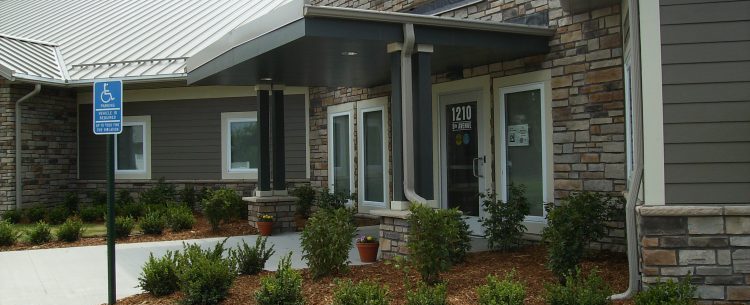Preservation & Redevelopment

Much of our work with communities leads to the identification of blighted or underutilized sites and existing structures that offer adaptive preservation and/or re-use opportunities. Preservation and redevelopment can be powerful tools to support and stimulate community growth. SWMHP works with communities and other businesses to secure resources to help preserve properties, or clear sites to develop residential, commercial or community facilities. If your community or organization is interested in more information on finding the right tools and resources to address preservation/rehab or redevelopment needs, please call 507-836-1610 or email Jen.
Preservation and Rehabilitation Resources
Preservation and Rehabilitation can bring new life to single-family homes, multi-family properties, and business districts. The Partnership can bring construction expertise and financial resources to your neighborhood or property, whether the goal is to:
- Remove health and safety hazards
- Increase marketability
- Meet accessibility requirements
- Increase energy efficiency
Rehab programs can use a wide variety of financial tools. The Partnership regularly utilizes State programs, including the Small Cities Development Program and HOME Rental Rehab Loans, as well as foundation support, tax credits, and community leverage to renovate properties. We also offer various rehab programs for rental property owners and homeowners, click here for more info.
Redevelopment Projects
SWMHP has a wealth of experience working with communities on redevelopment efforts, including:
Central School (Southwest Mental Health Campus), Worthington, MN
Worthington’s Central School was a prominent building located on a whole block adjacent to the central business district. Surrounding uses are residential, the Historic Dayton House, churches and the Nobles County Library. SWMHP acquired the building for $1 and instituted a plan to adapt the building for mixed income residential uses. A local fund-raising goal was identified but failed to reach its goal and the project failed to receive funding through the Minnesota Housing Finance Agency. At the same time the Southwest Mental Health Center (SWMHC) was losing their main office and clinic due to an expansion of the Sanford Medical Center as well as having conditional issues with a modified single-family structure that was serving as an intensive residential treatment facility. SWMHP began working with SWMHC to redevelop the Central School site into a mental health campus in four phases:
- Demolition and clearance of the Central School. The City and School District provided financial assistance with environmental abatement and SWMHP financed the demolition and site clearance.
- Development of the Unity House (10 bed intensive residential treatment facility) and future shared parking for the SWMHC and the Historic Dayton House. The SWMHP sold the site to SWMHC, secured financing, provided development services, loan processing and construction management. Historic Worthington provided $20,000 towards the parking lot and SWMHC member counties provided additional funding.
- Disposition of the former Unity House. The SWMHP repurposed the facility as single-family housing. The building was acquired for $1 from SWMHC. The City of Worthington contributed $30,000 and the SWMHP invested $86,675 into rehabilitation. Institutional Corrections Work Crews plus local contractors were hired to complete the work. A Karen family purchased the home using SWMHP homeownership services.
- SWMHC Offices and Clinic. The SWMHP provided development services to develop the SWMHC office and clinic. The project saved 40 professional positions in the community and provided centralized services while gaining positive community feedback and support.
St. Peter Community Hospital (Park Row Crossing), St. Peter, MN
The former St. Peter Hospital was purchased by the City when the St. Peter Hospital constructed a new facility. The former hospital was constructed in the 1930’s had no architectural significance, was heavily contaminated and in a prime location near the downtown, close to a major park and library/community center, the elementary school and Gustavas Adolphus College. The City contacted SWMHP and inquired if SWMHP had an interest in redeveloping the site. The SWMHP proposal, which was accepted by the City, was to develop two 20-unit residential buildings with a mix of bedroom sizes and underground parking now known as Park Row Crossing. The site design focused on an interior courtyard while making direct connections to nearby community amenities. The project serves low and moderate income residents with four rental units being set-aside for homeless families. The building design is back to back row houses with community approved exterior finishes and color palette. The building mass, exterior finish and color palette were selected to fit into the neighborhood. The property was placed in service in 2015.
Herman Motors (Rock County History Museum), Luverne, MN
Rock County contacted SWMHP to obtain assistance working with the Rock County Historic Society (RCHS) who needed to find new space to house their collection. RCHS had identified a potential building that had been vacant for many years and is part of the City of Luverne’s central business district. The former Herman Motors building originally started as an 1890’s blacksmith shop and after at least four structural additions eventually ending up during the 1940’s as the location for Herman Motors. The building is a fine example of the iconic curved front automotive dealership design that also includes an intact cast iron pedestal sign. The SWMHP was able to institute design build process to modify the structure to house display space, workshops and conservatory space for the RCHS. The design build services included providing architectural design services through the SWMHP (Rose Fellowship) and general construction services through the SWMHP general construction company Southwest Building Services. The project was largely financed through private donations of nearly $1,000,000.
